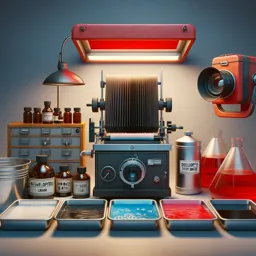Adobe Lightroom stands as one of the premier tools for photographers seeking powerful yet intuitive ways to elevate their images. While many users become comfortable with its basic sliders and cropping tools, Lightroom offers a wealth of advanced features designed to transform ordinary photos into works of art. In this article, we’ll explore some of the advanced photo editing techniques that Lightroom has to offer, helping you push your creative boundaries and develop your unique style.
1. Non-Destructive Editing with Virtual Copies
One of Lightroom’s strengths is its non-destructive editing workflow. By creating virtual copies of your original photo, you can experiment with different looks and adjustments without altering the original source file. To do this, simply right-click on an image and select ‘Create Virtual Copy.’ This feature is invaluable for comparing various editing styles or creating before-and-after comparisons.
2. Precision Edits with the Radial and Graduated Filters
The Radial Filter and Graduated Filter tools allow for selective adjustments in specific areas of your images. Use the Radial Filter to brighten a subject’s face or apply creative vignettes, and use the Graduated Filter to enhance skies or add depth to landscapes. Remember, these filters can be combined and their effects fine-tuned with the brush adjustment tool.
3. Fine Control Using the Tone Curve
The Tone Curve is a powerful feature for adjusting the contrast and brightness in specific tonal ranges of your image. By placing anchor points on the curve, you can precisely control highlights, midtones, and shadows. For more creative color grading, use the individual Red, Green, and Blue curves to shift colors in the highlights and shadows.
4. Creative Color Grading with the Color Mixer
Lightroom’s HSL/Color Mixer allows you to manipulate the hue, saturation, and luminance of individual colors. This is great for giving your images a distinctive mood—make greens more vibrant in a landscape, or mute specific colors for a moody effect. The Color Grading panel adds another layer, letting you tint highlights, midtones, and shadows independently.
5. Advanced Masking for Targeted Adjustments
With the Masking panel, you can isolate and edit precise parts of an image using AI-powered subject and sky detection, or create your own with the brush or range tools. Stack multiple masks to combine effects for complex, layered edits.
6. Efficient Batch Processing with Presets and Sync
Apply your editing workflow efficiently to multiple photos by creating custom presets or using the Sync option. Once you dial in a look that you love, you can instantly apply it to an entire shoot, ensuring consistency and saving precious editing time.
Conclusion
Mastering these advanced editing techniques in Adobe Lightroom will unlock new creative possibilities. Whether you’re enhancing a portrait, dramatizing a landscape, or developing your own signature style, Lightroom’s features support every step of your artistic journey. Don’t be afraid to experiment—your next masterpiece could be just a few clicks away!

























